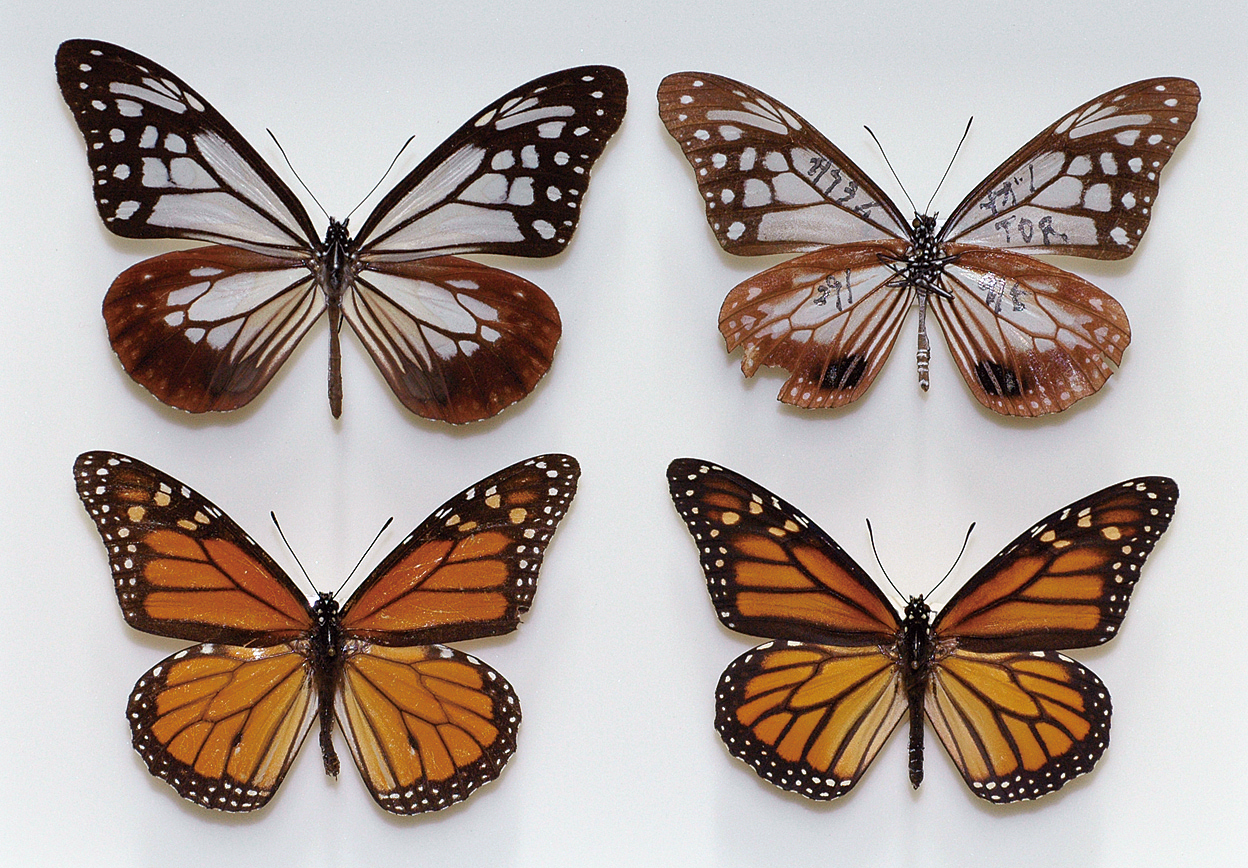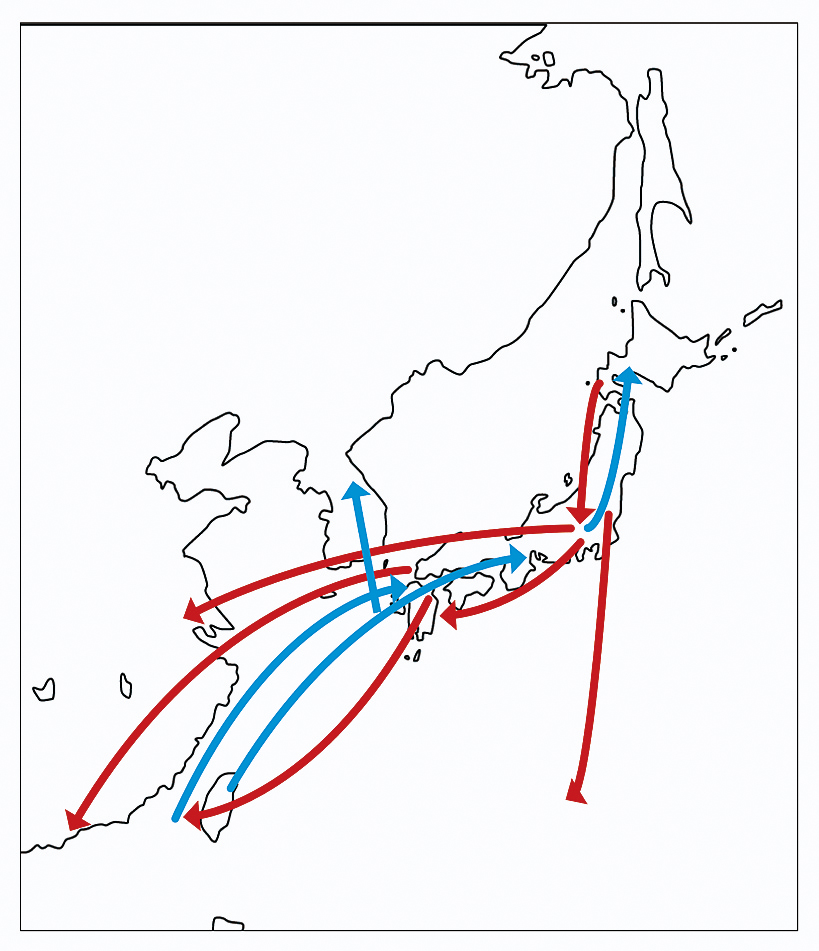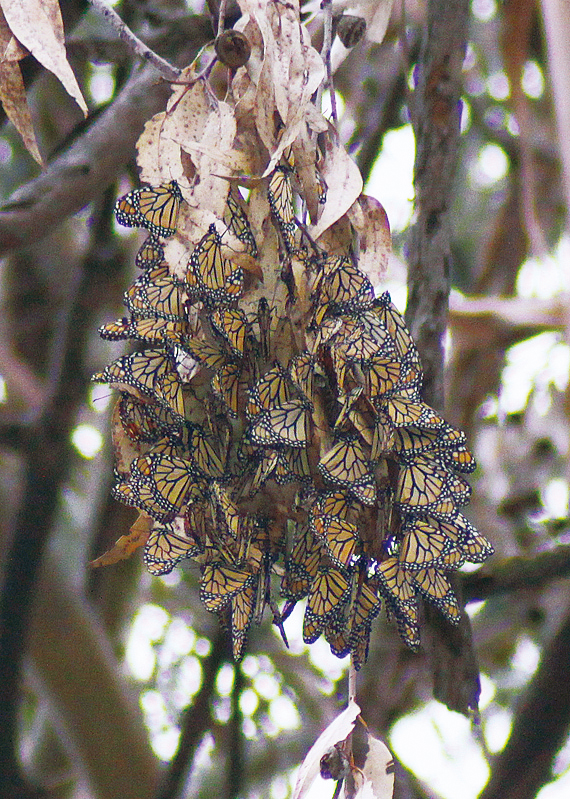B25
Parantica sita and Danaus plexippus
migratory butterflies
The Chestnut Tiger butterfly, Parantica sita, is distributed throughout E and SE Asia, while a subspecies, P. sita niphonica, primarily occurs in Japan and Taiwan, but has also been recorded in China, Korea and Sakhalin. Mark-release-recapture surveys revealed that the subspecies migrates northeastward in spring and summer over a few generations and southwestward in autumn for overwintering. The longest migration record is traveling up to 2,500 km within 83 days from Wakayama Pref., Japan, to Hong Kong. According to molecular work, P. sita is very likely to include some cryptic species in the species, and this hypothesis is also supported by morphological data from the wing markings, androconia and immature stages. On the other hand, the Monarch butterfly, Danaus plexippus, migrates in a mere single generation from the northern US and Canada to overwinter in Mexico and California (traveling about 3,500 km). After overwintering in clusters for four to five months, this butterfly begins mating and flying north in spring. Recolonization of northern latitudes takes place over the course of three to four generations. In late summer, it travels southward again and the process repeats itself. Recently, the navigational mechanisms of the migrating butterfly such as a time-compensated sun compass, a magnetic compass and its genetic basis have been gradually clarified. (Masaya Yago)
References
金沢 至・橋本定雄・福村拓己・伊藤雅男・アサギマダラを調べる会(2013)「アサギマダラの移動における日本海ルートの可能性」『Nature Study』60 (1): 3–6。
新川 勉・矢後勝也・中 秀司・福田晴夫・村上 豊・宮武頼夫・野中 勝(2006)「マダラチョウ科の分子系統」『昆虫と自然』42 (1): 5–11。
矢後勝也(2012)「2011年の昆虫界をふりかえって—蝶界」『月刊むし』(495): 2–18。
矢後勝也(2015)「第6章・チョウにみる進化と多様化」『遺伝子から解き明かす昆虫の不思議な世界』大場裕一・大澤省三・昆虫DNA研究会(編):251–310、悠書館。



